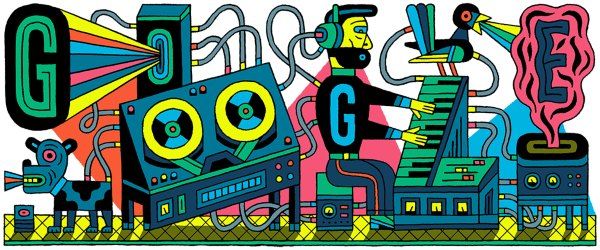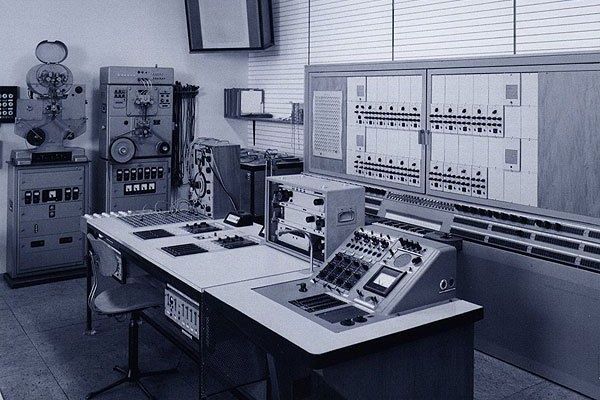Over the years, Google has changed, and it has turned into a knowledge house without even searching. Google is known to celebrate several holidays, historical places, and birthdays of famous people in history. The platform responsible for this is the Google doodle that appears on the homepage of Google. Google doodle changes the logo on the website and links it to the page that provides the best information about that topic. However, in 2017, a doodle on Google left everyone wondering that what it was and what is the story behind it.

In October 2017, Google celebrated the 66th anniversary of the first-ever Studio for Electronic Music, which has left a significant chunk of the population perplexed. So what is the studio for electronic music in Germany?
What is the Studio for Electronic Music in Germany?

The Studio for Electronic Music was the first facility of its kind that was started back on 18th October 1951 in Cologne, Germany, formed following a meeting at major post-war West German broadcaster Nordwestdeutscher Rundfunk (WDR). The meeting took place where the general manager of the radio station, Hanns Hartmann, decided to approve of the project, and that date marked the establishment of the studio.
The concept of forming a studio to create and develop electronic music was initiated by composers Werner Meyer-Eppler, Fritz Enkel, Robert Beyer, and Herbert Eimert. From everyone involved in the meeting, Robert Beyer had mentioned earlier about timbre-oriented, and he firmly believed that this would be the right time for them to work with this idea. Fritz was a technician, and he conceptualized the establishment of the studio, and Herbert was a composer, musicologist, and journalist. Before planning the idea for the studio, they had pondered upon the technical requirements of the challenge. Eimert was the director of the Studio für Elektronische Musik, and Meyer-Eppler was a lecturer at Bonn University.
The studio for electronic music in Germany was home to many musicians, artists, and music composers from across the world who experimented with the latest advancements in the electric music segment. The types of equipment present at the studio were used for mixing tracks and beats to create unique sounds that are famous to this date. The types of equipment in the studio were like a toy store for grown-ups, and soon, the studio turned into a breeding haven for musical innovation. The studio in Germany was used until 2000 to create new music and tracks for their sets.
Fact: The famous 20th-century composers Karlheinz Stockhausen served as the studio’s artistic director for an extensive period. This is the time when Stockhausen worked on two sine tones – Studie I and Studie II.
In 1962, when Herbert Eimert retired, the organization of the studio for electronic music in Germany was restructured. An inventory assessment was carried out where they found that most of the devices were not supposed to be used together. On the other hand, some other studios and institutions were already moving in the direction of automated facilities. Many new equipment and technologies were added to modernize the studio for electronic music in Germany during the 1960s. From 1963-1966, the compositional work was reduced as the studio was moving out and expanding to a bigger location to keep up with the upcoming technology. The studio further automated its processing in the 1970s.
With the automation of the studio in 1970, the activities that took place in the studio divided into two categories, the first was extended tours with Stockhausen’s compositions such as Kontakte, Hymnen, and Sirius. The second category was responsible for the developments that were taking place in the studio, which attracted more composers to the studio. The most significant milestone for the studio was when they purchased an EMS Synthi 100, a machine that used voltage-controlled oscillators and filters that were driven by three digital sequencers with two tracks. The device was used extensively by Stockhausen when he was working on his new record and used it in the electronic music for Sirius.
Fact: The Studio for Electronic Music Germany played a crucial role in the development of electronic music in the latter 20th century.
Things were going well for the studio, but slowly people retired, and then the WDR management decided to sell the building where the studio was located. The sound engineer, Volker Muller, who worked in the studio since 1970, collected old analog devices and displayed them in a small museum to tell people about the techniques that were used earlier. The company celebrated the 50th anniversary of the company, and then the remaining equipment from the studio was moved to quarters in Ossendorf district for storage.
Sadly, the studio for electronic music in Germany was closed in 2000 after leading a legendary musical journey. In 2017, an anonymous patron bought the building (Burg Mödrath near Kerpen) in which Stockhausen was born, and announced his plans to open it up as an exhibition space for modern art along with a dedicated museum for the WDR Studio that was to be installed on the first floor. This is how, in 2017, Google remembered the studio and appreciated its contribution to the electronic music industry by Google Doodle display on 18th October 2017.
The marvelous creations from the Studio:
Here is a list of all the electronic music that was created at the Studio for Electronic Music in Germany by the artists in the year 1951-1962. These are as follows:
- Klangstudie 1 by Herbert Eimert
- Klangstudie 2 by Eimert-Beyer
- Klang Im Unbegrenzsten Raum by WDR Sinfonieorchester Koln
- Glockenspiel by WDR Sinfonieorchester Koln
- Komposition Nr.5 by Karel Goeyvaerts
- Etude Uber Tongemische by Herbert Eimert
- Studie I by Karlheinz Stockhausen
- Formaten 1&2 by Paul Gredinger
- Seismogramme I – III by WDR Sinfonierorchester Koln
- Komposition Nr.7 by Karel Goeyvaerts
- Interferenzen by Giselher Klebe
- Doppelrohr II by WDR Sinfonierorchester Koln
- Gesang Der Junglinge by Karlheinz Stockhausen
- Klangfiguren I by WDR Sinfonierorchester Koln
- Klanfieguren II by Gottfried Michael Koenig
- Incontri Di Fasce Sonore by Franco Evangelisti
- Glissandi by Gyorgy Ligeti
- Essay by Gottfried Michael Koenig
- Artikulation by Gyorgy Ligeti
- Transicion II by Mauricio Kagel, Aldo Orvieto, Dimitri Fiorin, Alvise Vidolin
- Anepigraphe by Herbert Brun
- Kontakte by Karlheinz Stockhausen
- Terminus I by Gottfried Michael Koenig
- Antithese by Mauricio Kagel
What is Electronic Music?
Today, we bang our heads to the music of popular electronic music artists like Skrillex, Martin Garrix, and Daft Punk. The music genre of EDM- Electronic Dance Music traces its roots back to the late 19th and early 20th century with the discovery of electric music.

Electronic music is the music that exercises the use of electronic musical instruments, digital instruments & circulatory-based music tech. The melody of electronic music is created with the use of electromechanical instruments like telharmonium, Hammond organ, and the electric guitar.
It can also be teamed up with the use of computer-based electronic music technology and devices like theremin and synthesizer.
Some forms of electronic music that have developed over time are:
- Krautrock
- Neo-soul
- New-age
- New Wave
- Noise
- Post-disco
- Post-punk
- Psychedelic
History of Electronic Music in Germany
The electronic music in Germany has paved its way through post-war times into the news age music. However, the history of electronic music explained by the first-hand encounters of some of the most famous German artists state how electronic music gained popularity overnight.

Reinhard Lakomy, in an interview, stated how he heard Tangerine Dream, a German electronic music band formed in 1967, secretly via West German TV one day. Later on, the band came to perform in East Germany at Past der Republik, after which the unique beats and rhythm of the music established its place in the hearts of people.
Slowly and steadily, the entire German nation marched its way towards the electronic music after which gave birth to artists like Klaus Schulze, Jean Michel Jarre, Vangelis, and more.
Fact: Tangerine Dream’s music, despite containing no lyrics, was reckoned unpolitical by the officials.










